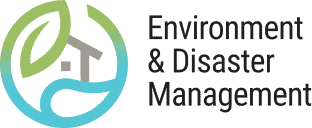Torrential monsoon rains have resulted in the loss of lives, livelihoods, and infrastructure across the Asian continent in recent weeks. Japan, Nepal, India, and Thailand have been among the hardest hit by the monsoon season, as the scale and frequency of regional flooding and landslides have increased in scale and scope.
The upsurge of extreme weather events raises the pressure on flood managers across Asia to design and develop coordinated, comprehensive flood risk management methods.
Developed in partnership with the U.S. Agency for International Development and the Office of U.S. Foreign Disaster Assistance (USAID/OFDA), WWF’s Natural and Nature-Based Flood Management: A Green Guide (Flood Green Guide) offers guidance on natural and nature-based flood management methods based on integrated watershed management including policy changes (non-structural) as well as hard and soft engineering (structural) methods.
Last month, WWF joined forces with the Asian Institute of Technology (AIT) to test an emerging Flood Green Guide (FGG) training curriculum and gain critical feedback on the implementation of training through a regional workshop in the country’s capital of Bangkok. Academics, civil society organizations and flood management professionals from several countries – Bangladesh, Laos, Malaysia, Myanmar, Nepal, the Philippines, Sri Lanka, Thailand, and Vietnam – participated in the training workshop, representing the fields of civil engineering, climate science, forestry, environmental management, sustainable development, and community management.
![[cml_media_alt id='2260']presentation[/cml_media_alt]](https://envirodm.org/wp-content/uploads/2022/02/presentation-2-1.png)
Dr. Missaka Hettiarachchi, with the WWF Environment and Disaster Management program, led the training, alongside Dr. Indrajit Pal (AIT), Dr. Vidya Venkataramanan (Northwestern University), Dr. Kyle McKay, United States Army Corps of Engineers (USACE), and Mr. John Kucharski USACE. The instructors, whose expertise includes natural resource economics, civil engineering, integrated water resources management, disaster management, environmental planning, anthropology, and public health, introduced the FGG key concepts to the 20 participants through a series of presentations, videos, practical exercises, interactive games, group discussions, exhibits, and group presentations.
![[cml_media_alt id='2258']recolor-caption[/cml_media_alt]](https://envirodm.org/wp-content/uploads/2022/02/recolor-caption-1-1024x682.png)
The agenda for the 3-day Flood Green Guide training followed the key stages of the flood risk management decision cycle. The participants were introduced to a hypothetical case, the “Green River Floods Scenario”, for which they worked together to conduct a preliminary analysis and assessment, identify the applicable methods for flood risk management, select and design appropriate methods for managing risk, discuss project operation and monitoring, and evaluate the proposed projects through integrated modeling. The training offered a unique opportunity for the participants, each informed by their own experiences working in different sectors and disciplines of flood management in South and Southeast Asia, to exchange potential challenges and successes and to enhance their own knowledge on the subject.
“I wish I knew about the Flood Green Guide framework and tools when planning my current flood risk management project, which covers three major river basins,” said one participant, an irrigation engineer working on a $20 million water management project. “It would have made the project very effective,” she added.
![[cml_media_alt id='2259']recolor2-caption[/cml_media_alt]](https://envirodm.org/wp-content/uploads/2022/02/recolor2-caption-1-1024x682.png)
Now, having successfully collaborated through the workshop, the participants are eager to continue their dialogue, and to form a new regional network of Flood Green Guide-trained flood managers. The WWF’s Environment and Disaster Management program is currently developing a web-based forum that will allow them to discuss key questions and challenges in adopting the FGG and applying it to their ongoing projects. Over the next few weeks, the participants will present the FGG and lessons learned to their colleagues at home and will report back to advance the regional FGG application and learning.
